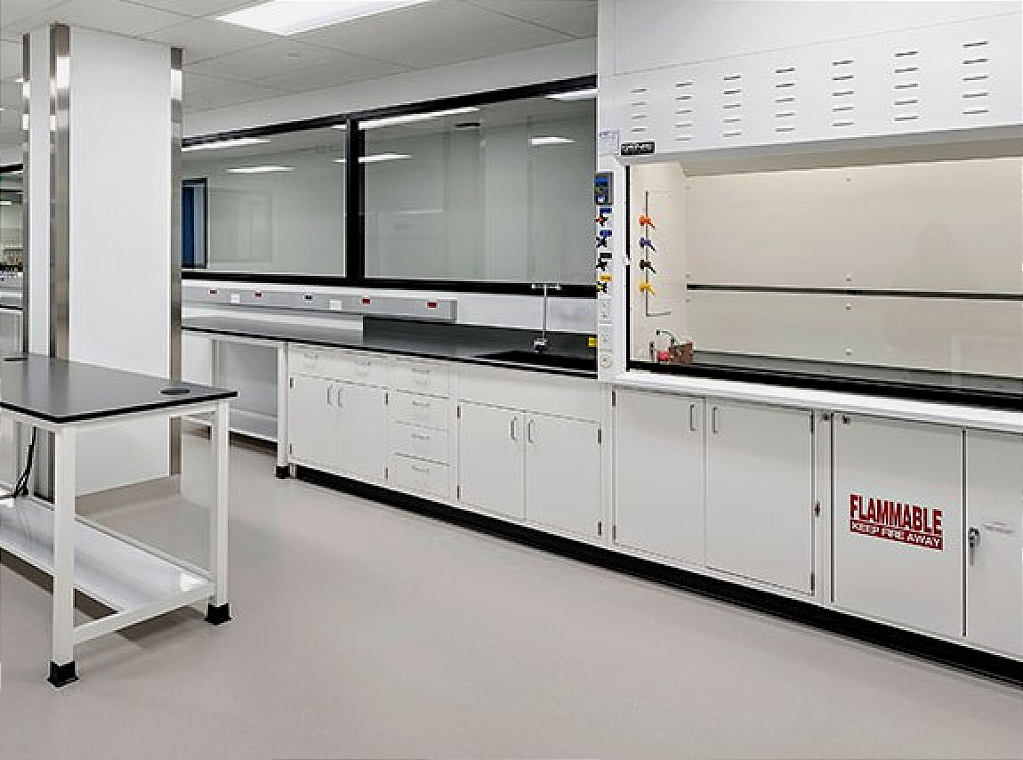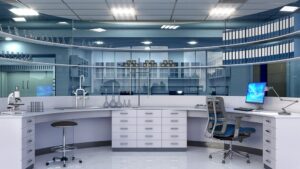
As with any laboratory furniture, choosing the right lab benches is a crucial decision for any research facility, as these workstations serve as the foundation for scientific endeavors. The choice of lab benches can significantly impact the efficiency, safety, and functionality of a laboratory.
With a myriad of options available, it is essential to consider several factors to ensure that the selected benches meet the specific requirements of the research being conducted.
This article outlines key considerations that researchers should keep in mind when selecting lab benches for their research needs.
What is a Lab Bench?
The term “lab bench” is a generic designation for benches that have been specifically crafted to cater to the requirements of a diverse range of laboratories and experimental settings.
The nature of the work being performed is the decisive factor in determining the type of laboratory bench that will be installed. The initial differentiating factor is whether the bench is for a wet or dry laboratory, which determines the types of accessories it will need.
Additional Reading: The Benefits of Metal Benches in a Laboratory Setting
Classification of Lab Benches
They are classified into three subsections, namely Purpose, Function, and Structure.
Purpose
Classifying laboratory workbenches by purpose is challenging, owing to the extensive array of customized designs that are engineered for a specific purpose. Examples of specialized lab benches include those that are meticulously created for cleanrooms.
The laboratory benches with the most notable functions are the sink lab benches and island lab benches, with the former possessing plumbing and a sink, while the latter are larger to accommodate more laboratory staff.
Other options include side benches fixed to walls, and reagent racks that are typically fitted to side or island benches to store and organize reagents, chemicals, and other substances used in experiments and tests.
Function
- Physical laboratory benches are utilized for experiments that involve electrical devices, electronics, and other non-reactive dry activities and processes.
- The chemical lab benches accommodate a broad range of experiments and include organic and inorganic chemical investigations and research. Dry and wet lab benches can be used for chemical experiments.
- Biological and chemical lab benches often overlap in the type of research work done on them. Many biological laboratory benches have incubation equipment, sinks, and container organizers.
Structure
Structure classification encompasses three basic structures, with an endless list of custom-designed options for specialized research laboratories. Generally, lab benches can be suspended, floor-mounted, or mobile.
- Suspended lab benches are immovable and comprise a hanging frame that supports a suspended cabinet and bench, typically including electrical connections, racks, and accessories.
- Floor-mounted lab benches consist of a base, countertop of varying materials, racks, electrical connectors, and a range of different accessories depending on the function of the lab bench.
- Mobile lab benches are cabinets within supporting frames, fitted with castors or rollers, perfect for repositioning the bench for easy access in any space of the lab.
Dry Lab Bench
A dry lab bench typically refers to a laboratory workspace that does not involve the handling of chemicals, biological materials, or other hazardous substances.
It is used for computational or desk-based research activities, such as data analysis, modeling, and simulation.
Dry lab benches are equipped with amenities like computers, monitors, and data storage devices, and are designed to provide a comfortable and efficient workspace for researchers conducting non-wet-lab activities.
Wet Lab Bench
A wet lab bench is a laboratory workspace designed for handling chemicals, biological samples, and other liquids.
These benches are typically equipped with features such as chemical-resistant countertops (e.g., stainless steel, epoxy resin), sinks for washing and disposal, and storage for lab equipment and reagents.
Wet lab benches are used for experiments and procedures that involve the use of liquids, and they are designed to provide a safe and functional environment for researchers to conduct their work.
Ergonomic Lab Bench
An ergonomic laboratory bench is designed to minimize physical strain and maximize comfort for researchers spending long hours in the lab working environment.
These benches often have adjustable height settings to accommodate different users and tasks, reducing the risk of musculoskeletal injuries.
Additionally, ergonomic lab benches may have features such as footrests, tilt options, and ergonomic seating to promote good posture and reduce fatigue.
The ergonomic design of these benches aims to create a more comfortable and efficient workspace, ultimately enhancing productivity and well-being.
Traditional vs. Fully Equipped Lab Benches
Traditional or standard lab benches are strong and sturdy and manufactured for general laboratory use. Any sinks, drainage, and other necessary features are added when benches are customized.
Fully equipped workbenches are a relatively recent development in the industry. These laboratory work benches contain all the essential components required for conducting experiments. They have storage compartments, stable work surfaces, water sinks, power outlets, data ports, and lighting fixtures.
Considerations for Choosing the Right Lab Benches for Your Research Laboratory Needs
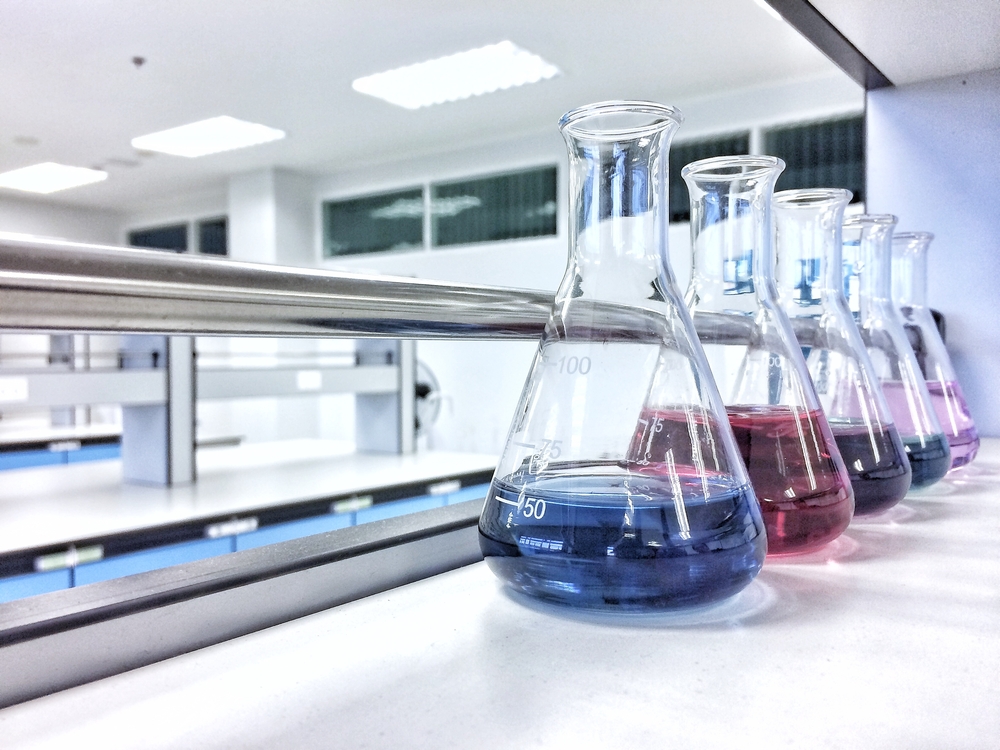
Choosing the right lab benches for your research lab needs is crucial for ensuring safety, efficiency, and functionality in your laboratory.
Here are some key factors to consider, some of which will be discussed in more detail separately:
1. Material
Lab benches are typically made of materials like stainless steel, epoxy resin, or phenolic resin. Consider the type of chemicals and processes you will be working with to choose a material that is resistant to corrosion, chemicals, and heat.
2. Size and Configuration
Determine the size and configuration of the lab benches based on the available space in your lab and the specific requirements of your research. Consider factors like the number of researchers using the bench, the equipment that needs to be accommodated, and the workflow.
3. Adjustability
Adjustable lab benches allow researchers to work comfortably at different heights, which is important for ergonomics and preventing strain injuries. Consider benches with adjustable height and tilt options.
4. Storage and Shelving
Consider the amount of storage space and shelving you need for your equipment, chemicals, and supplies. Choose benches with built-in storage options, or select separate storage solutions that fit your needs.
5. Durability and Maintenance
Choose lab benches that are durable and easy to maintain. Look for materials that are easy to clean and resistant to scratches and stains.
6. Compatibility with Equipment
Ensure that the lab benches are compatible with the equipment you will be using, such as microscopes, centrifuges, and other lab instruments. Consider the weight capacity and stability of the benches.
7. Safety Features
Consider safety features such as chemical-resistant surfaces, spill containment options, and integrated safety shields or barriers to protect researchers from potential hazards.
8. Cost
Consider your budget and select lab benches that offer the best value for your needs. Compare prices from different suppliers and consider long-term costs, including maintenance and replacement.
9. Compliance
Ensure that the lab benches comply with relevant safety and regulatory standards, such as OSHA (Occupational Safety and Health Administration) guidelines and local building codes.
10. Future Needs
Anticipate future changes and expansions in your research activities. For adaptability, pick lab benches that can be easily reconfigured or expanded to accommodate future needs.
These are the basic factors to consider when selecting any type of laboratory bench, but specialized labs have additional requirements. By considering these factors, you can select lab benches that meet your research needs and create a safe and efficient laboratory environment.
Specialized Laboratory Bench Considerations

While there are many basic properties to look for when choosing lab benches, making the right choice for specialized research laboratories is crucial.
These environments have unique requirements and functionalities. Understanding the specific needs of your research lab is essential to ensure that the lab benches meet these requirements.
Factors such as chemical resistance, static control, cleanroom compatibility, vibration isolation, and temperature control can significantly impact the safety, efficiency, and accuracy of your research. By considering these specialized properties and selecting lab benches that align with your lab’s requirements, you can create a workspace that enhances productivity and supports your research goals.
Here are some additional properties to look out for when choosing lab benches for specialized research laboratories:
1. Chemical Resistance
If your research involves working with highly corrosive chemicals, you will need lab benches that are specifically designed to resist these chemicals. Epoxy resin or stainless-steel benches are often suitable for such applications.
2. Static Control
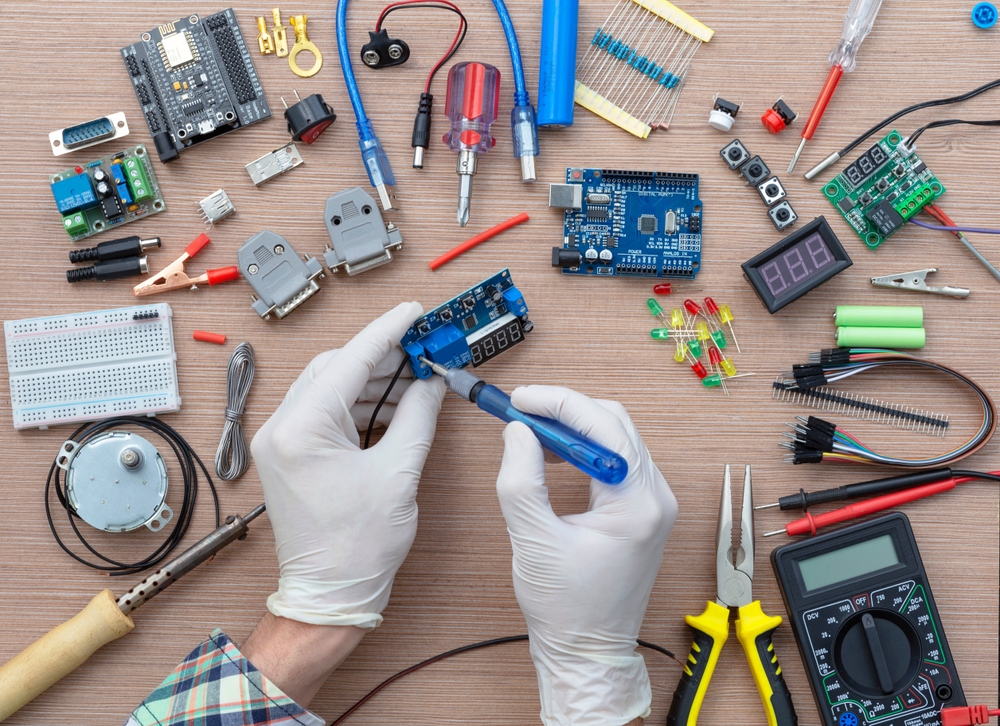
Laboratories dealing with sensitive electronic equipment or explosives may require lab benches with static-control features, such as Electrostatic Dissipative (ESD) Benches. Uncontrolled ESDs can influence the results of an experiment, ignite flammable materials, and they can contaminate a cleanroom.
3. Cleanroom Compatibility
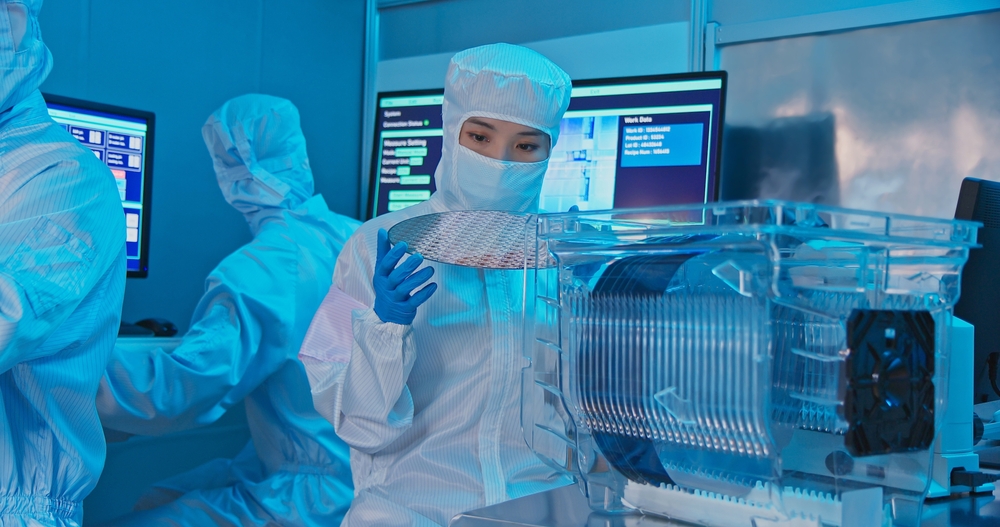
A cleanroom environment is a controlled environment where products are manufactured, or scientific research is conducted, with a low level of pollutants such as dust, airborne microbes, aerosol particles, and chemical vapors.
Cleanrooms are designed to minimize contamination and maintain a stable environment concerning factors like temperature, humidity, and pressure.
They are used in industries such as pharmaceuticals, biotechnology, electronics, and aerospace, where even tiny particles or contaminants could compromise the quality of the products or research.
4. Vibration Isolation
Some research applications, such as microscopy or precision measurements, require lab benches with vibration isolation features to minimize vibrations that could affect the accuracy of the results.
5. Radiation Shielding
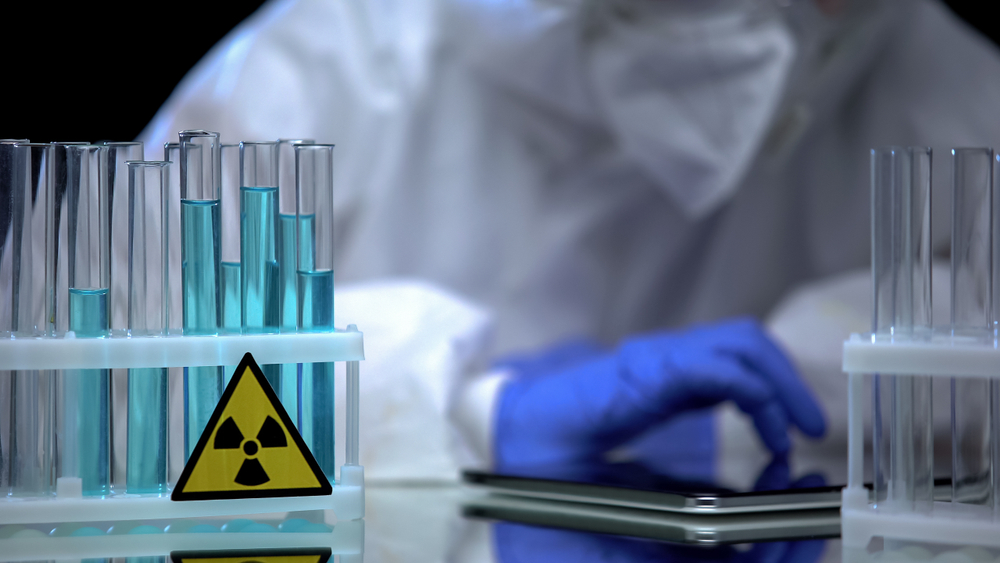
Laboratories working with radioactive materials may require lab benches with built-in radiation shielding to protect researchers and equipment.
6. Temperature Control
For experiments requiring precise temperature control, lab benches with integrated heating or cooling elements may be necessary.
7. Specialized Work Surfaces
Certain research applications, such as microbiology or cell culture work, may require lab benches with specialized work surfaces that are sterile, non-porous, and easy to clean.
8. Benchtop Fume Hoods
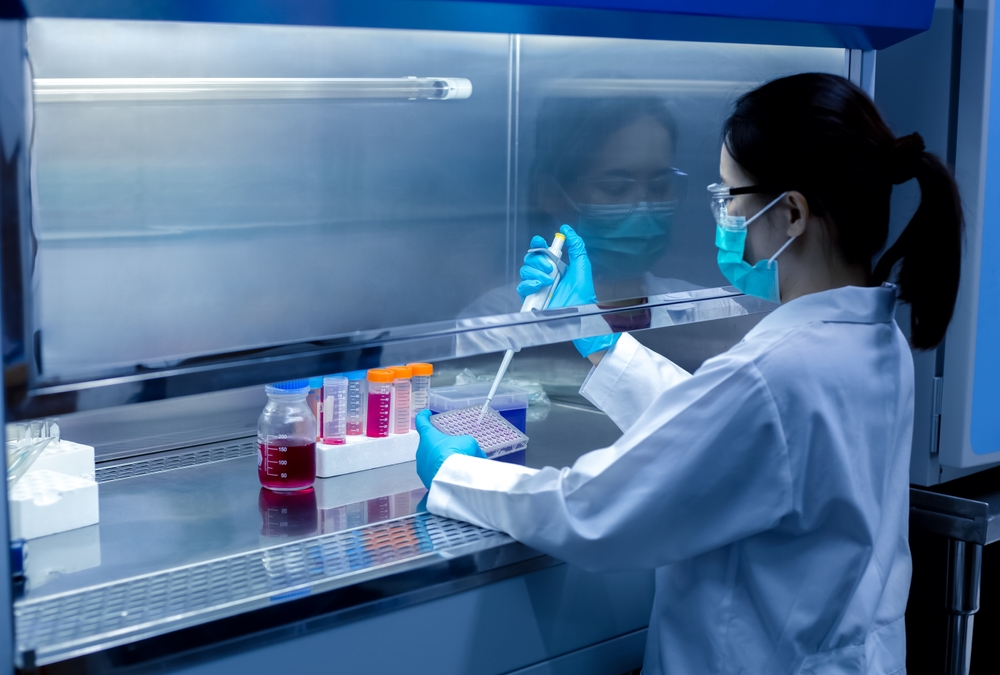
Benchtop fume hoods are used for a wide variety of chemical procedures involving small-to-moderate quantities of toxic materials. They provide effective containment and exhaust of gases, vapor, mists, fumes, and other aerosols having low particle mass.
9. Data and Power Integration
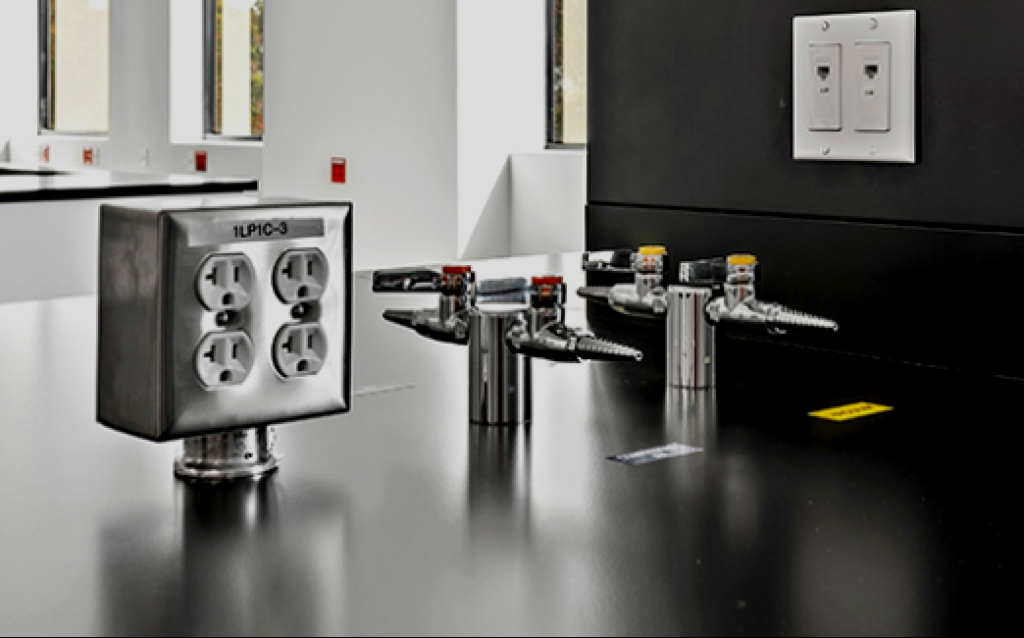
Some specialized research may require electronic lab benches tailored for electronics and electrical-related tasks. Furthermore, some lab benches require integrated data and power outlets for connecting and powering equipment.
10. Regulatory Compliance
Ensure that the lab benches meet any specific regulatory requirements relevant to your specialized research area, such as FDA regulations for pharmaceutical research or USDA regulations for food safety research.
By considering these specialized properties, you can select lab benches that are best suited to the unique requirements of your specialized research laboratory.
Additional Reading: The Ultimate Guide to Setting Up a Bench Laboratory
Benchtop Materials and Structure Considerations
The two primary factors related to the strength and resilience of a lab bench are the countertop material and the type of frame that determines its capacity to support weight. The capabilities of a lab bench will improve and expand as the materials for the frame and countertop become stronger and more resilient.

Benchtop Materials
Here are some common benchtop materials used in laboratories, along with their properties:
1. Stainless Steel
Stainless steel benchtops are durable, easy to clean, and resistant to corrosion and heat. Its oxide layer serves as a protective shield that prevents the benchtop from being chipped, scratched, or damaged by impact. They are often used in laboratories working with chemicals or requiring sterile environments.
Additional Reading: The Benefits of Metal Benches in a Laboratory Setting
2. Epoxy Resin
Epoxy resin benchtops are chemical-resistant, non-porous, easy to clean, and strong. They are also antimicrobial, impact and shock-resistant, and resistant to ultraviolet light. impacts, and shock and are antimicrobial, making them an ideal surface for wet labs.
The sleek, smooth, and even finish enhances the aesthetic appeal of epoxy resin countertops. They are suitable for laboratories working with corrosive chemicals or requiring a high level of cleanliness.
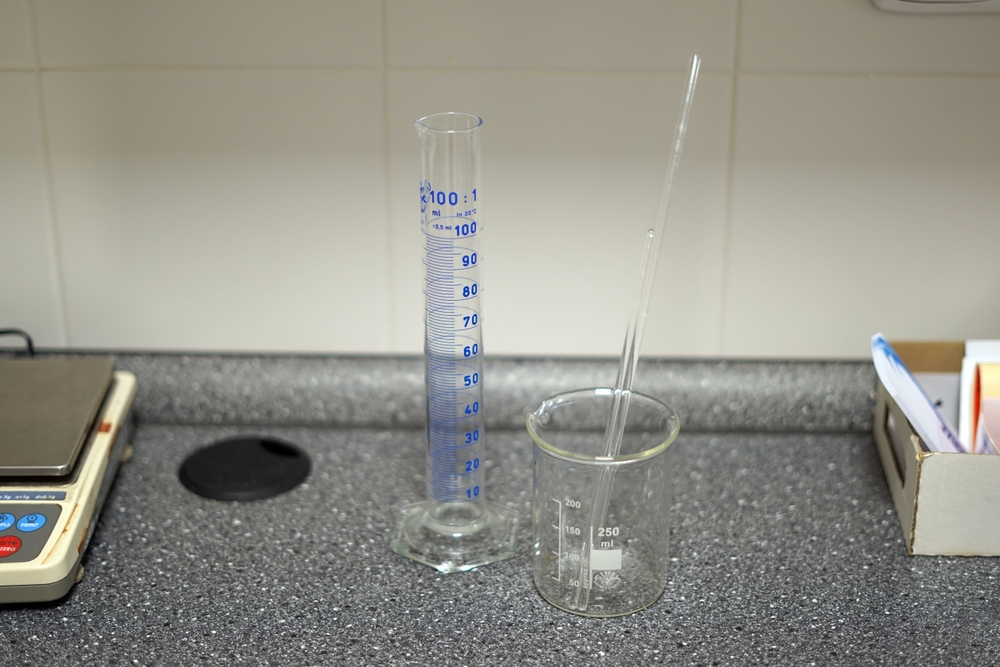
3. Phenolic Resin
Phenolic resin is a synthetic polymer created from the reaction of combining phenol and formaldehyde. These benchtops are resistant to chemicals, fungi, and bacteria. However, although phenolic resin has the same smooth finish as epoxy resin, it is not as durable and resistant to scratches or impact damage.
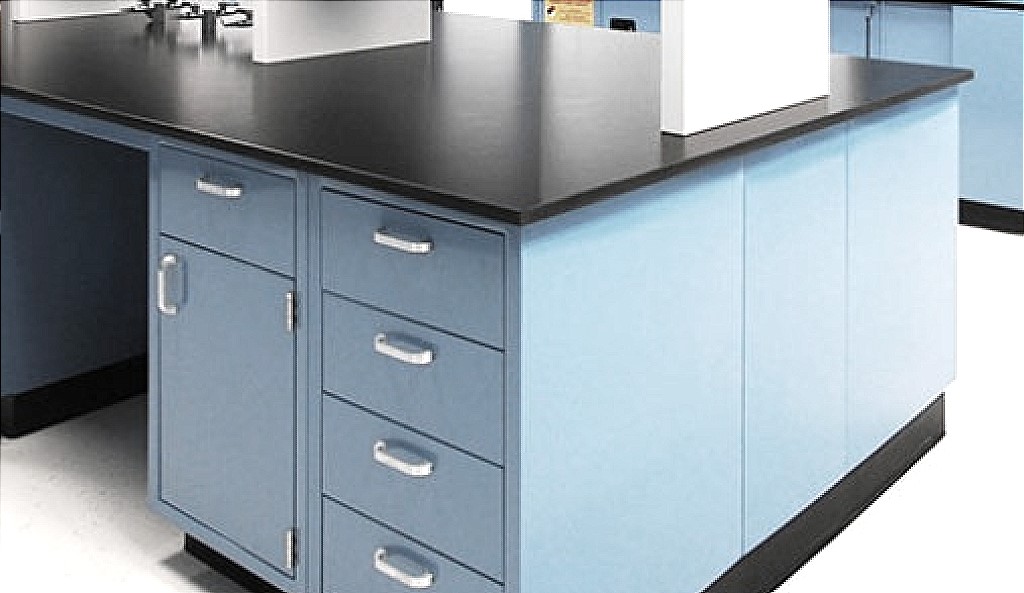
4. High-Density Polyethylene (HDPE)
HDPE benchtops are laboratory work surfaces made from a durable, chemical-resistant plastic material. These benchtops are commonly used in laboratories, research facilities, and educational settings due to their resistance to chemicals, moisture, and impact.
HDPE benchtops are easy to clean and maintain, making them ideal for use in environments where cleanliness and durability are important.
However, HDPE is a highly flammable material, has high thermal expansion, and is sensitive to stress cracking. Moreover, it lacks resistance to chlorinated hydrocarbons and oxidizing acids.
5. Granite
Granite is a durable and resilient material that is resistant to heat, scratches, and chemicals, making it ideal for use in environments where these factors are a concern.
Additionally, granite has a natural beauty and can be customized to fit the aesthetic needs of different laboratories.
However, granite is expensive, especially for large areas. It is porous and may absorb chemicals if not sealed properly. Granite benchtops are heavy and might need additional support.
6. Laminate
Laminate benchtops are cost-effective and available in various colors and designs. They consist of paper layers that have been soaked in phenolic resin. The assembled layers are placed in a hydraulic press, where they are subjected to high pressure and temperature. This process helps to bond the layers together and cure the adhesive.
They are durable, easy to clean, fire-resistant and strong. Since laminate benchtops are not resistant to the effects of acids, especially concentrated sulfuric acid, hydrochloric acid, and nitric acid, they are not suitable for wet lab environments.
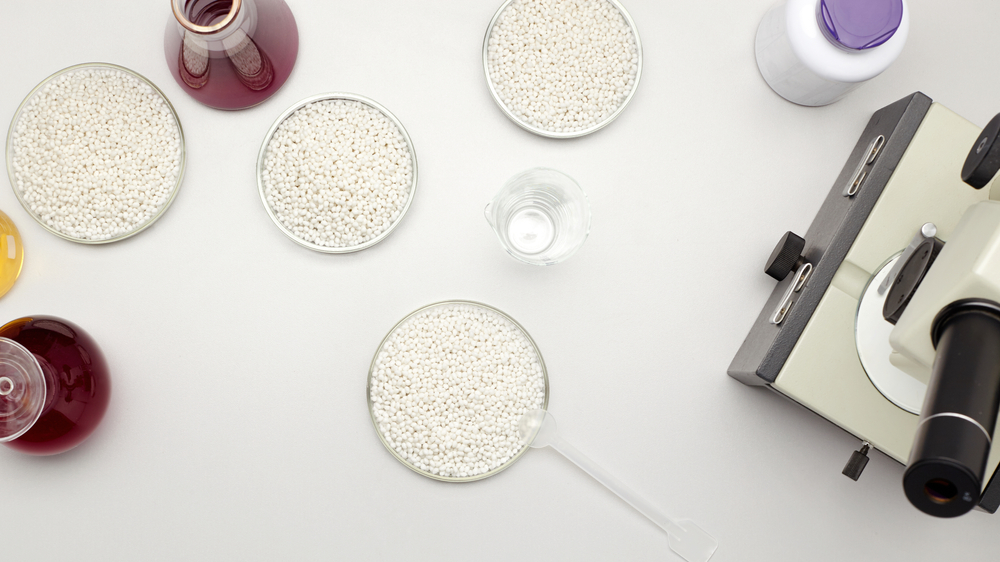
7. Ceramic
Ceramic surfaces are known for their durability, resistance to chemicals, and heat tolerance, making them suitable for many laboratory applications.
However, there is the potential for scratching or chipping, which could allow chemicals to seep into the ceramic.
8. Electrostatic Dissipative (ESD)
ESD work surfaces are designed to dissipate static electricity and protect sensitive electronic components from damage. They are commonly used in laboratories where electrostatic discharge can harm equipment or experiments. ESD work surfaces are typically made from materials such as conductive rubber, vinyl, or laminate.
9. Wood
Wood benchtops are generally not suitable for laboratories, especially those where chemical or biological experiments are conducted.
Wood is porous and can absorb liquids, chemicals, and microorganisms, making it difficult to clean and sanitize effectively. Additionally, wood is flammable, which is a significant safety concern in laboratory settings.
Each of these materials has its advantages and disadvantages, so it’s essential to choose a benchtop material that aligns with the specific requirements of your laboratory.
Lab Bench Frame Structures
The frame type determines the load capacity of a lab bench.
There are several frame types used in laboratory bench structures, each offering different advantages in terms of strength, durability, and flexibility. Here are some common frame types:
- Steel Frame: Steel frames are strong and durable, providing excellent support for heavy equipment and loads. They are often used in laboratories where robustness is required.
- Aluminum Frame: Aluminum frames are lightweight and corrosion-resistant, making them ideal for use in wet or corrosive environments. They are also easy to clean and maintain.
- Wood Frame: Wood frames are less common in laboratory settings but can be used in non-critical areas such as collaboration rooms, or for specific purposes. They provide a more natural aesthetic, but may not offer the same level of durability as metal frames.
- Adjustable Frame: Some lab benches come with adjustable frames, allowing the height of the bench to be easily changed to accommodate different users or tasks. This can improve ergonomics and comfort for researchers.
- Cantilever Frame: Cantilever frames have a single support beam at one end of the bench, providing more legroom and space underneath the bench. This design is often used in workbenches where access to the underside of the bench is required.
- Mobile Frame: Mobile frames have wheels or casters, allowing the bench to be easily moved around the lab. This can be useful for reconfiguring the lab layout or for creating flexible workspace arrangements.
- Static Frame: Static frames are fixed in place and do not have wheels or casters. They provide a stable and secure work surface but lack the flexibility of mobile frames.
- C-Type Frame: C-type frames are shaped like the letter “C” and provide excellent stability and support for lab benches. They are typically used in heavy-duty applications where strength and durability are paramount. The open design of C-type frames allows for easy access to the underside of the bench for maintenance or storage.
- H-Type Frame: H-type frames are shaped like the letter “H” and provide a sturdy and stable base for lab benches. They offer good weight distribution and can support heavy loads. H-type frames are commonly used in industrial and research settings where durability and strength are essential.
- U-Type Frame: U-type frames are shaped like the letter “U” and provide a stable and secure base for lab benches. They are often used in applications where the bench needs to be anchored to the floor or wall for added stability. U-type frames are suitable for heavy-duty applications and offer good weight distribution.
Each of these frame types has its advantages and is suitable for different laboratory settings and requirements.
When choosing a frame type for your lab benches, consider factors such as the weight of equipment and loads, the need for mobility or stability, and the overall design and layout of your laboratory.
It is essential to select a frame that meets the specific requirements of your laboratory and research activities.
Conclusion
In conclusion, selecting the right lab bench is a critical step in creating a functional and efficient research environment. By considering factors such as material, size, adjustability, storage, and safety features, researchers can select benches that meet their specific needs and enhance their research capabilities.
When considering the design, manufacture, and installation of basic or customized lab benches and other lab furniture, it is advisable to seek the guidance of an accredited provider.
Such providers have the expertise and experience to ensure that lab benches meet the necessary standards for safety, functionality, and durability. They can also offer advice on the most suitable materials, configurations, and features based on your specific requirements.
By working with an accredited provider, you can ensure that your lab benches are of high quality and meet the standards required for your research activities.
Investing in high-quality lab benches not only ensures the safety of researchers and the integrity of experiments but also contributes to the overall productivity and success of a research facility.

